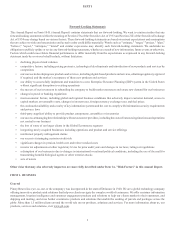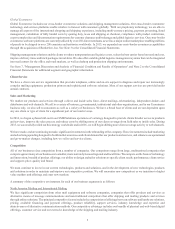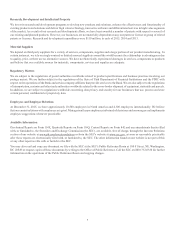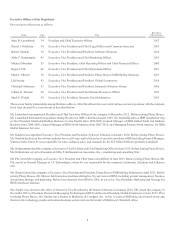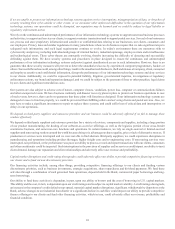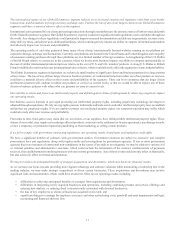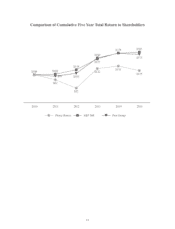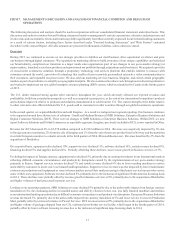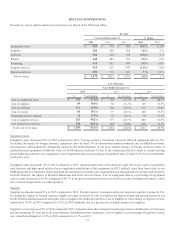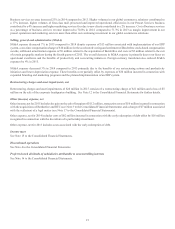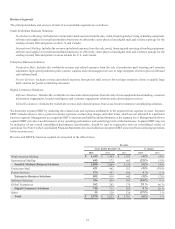Pitney Bowes 2015 Annual Report Download - page 28
Download and view the complete annual report
Please find page 28 of the 2015 Pitney Bowes annual report below. You can navigate through the pages in the report by either clicking on the pages listed below, or by using the keyword search tool below to find specific information within the annual report.12
Our investment in rebranding the company and enhancing marketing programs to build the market awareness necessary to create demand
for our businesses may not result in increased revenue and could adversely affect our profitability.
Our new brand strategy and identity are important to the next phase of our global business transformation. Our phased roll-out of the
new branding through an advertising campaign, which is now entering a new phase in its progress, is integrated into the way we sell and
service clients, and acquire new clients, including sales collateral and the digital experience of getting information, service performance
and transacting on our website. These factors are important to maintaining acceptance of our products and services by our existing clients
and achieving increased acceptance with new clients. We expect increased spending in brand development and marketing promotion
activities and if this increased spending does not result in increased revenue sufficient to offset these expenses, our profitability could be
adversely affected.
Our operational costs could increase from changes in environmental regulations, or it could be subject to significant liabilities.
We are subject to various federal, state, local and foreign environmental protection laws and regulations around the world, including
without limitation, those related to the manufacture, distribution, use, packaging, labeling, recycling or disposal of our products or the
products of our clients for whom we perform services. Environmental rules concerning products and packaging can have a significant
impact on the cost of operations or affect our ability to do business in certain countries. We are also subject to laws concerning use,
discharge or disposal of materials. All of these laws are complex, change frequently and have tended to become more stringent over time.
If we are found to have violated these laws, we could be fined, criminally charged, otherwise sanctioned by regulators, or we could be
subject to liability and clean-up costs. These risk can apply to both current and legacy operations and sites. From time to time, we may
be involved in litigation over these issues. The amount and timing of costs under environmental laws are difficult to predict and there
can be no assurance that these costs will not have an adverse effect our financial condition, results of operations or cash flows.



